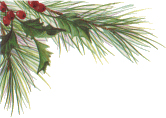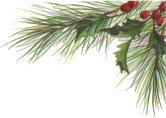Fraser Fir
Christmas Trees vs Fake Christmas Trees
Why use a real
tree?
Economic Advantages:
Real Christmas trees are grown on United States family farms, making an
important economic contribution to many rural communities in America.
Fake trees are made in Korea, Taiwan and China and importing artifical
trees contributes to the US trade deficit. Help promote economic
growth in the US.
Environmental Advantages:
Real Christmas trees absorb carbon dioxide and other harmful greenhouse
gases and release fresh oxygen into the air. A real tree has a
wonderful fragrance. One acre of real Christmas trees provides the
daily oxygen needed for 18 people. There are about 500,000 acres
of Christmas trees in the US which provide oxygen for 9 million people
daily.
Fake Christmas trees are
made from non-renewable plastics. The manufacture of petroleum
based plastics use up natural resources. The manufacturing of
plastic and metal components in fake Christmas trees consume energy and
create pollution.
For every real tree
harvested, another one is planted in its place to ensure a steady supply
year after year. Christmas tree fields support turkey, quail,
songbirds, rabbits and deer.
The avergae use of a fake
Christmas tree is only 6 or 7 years. Eventually they all go to the
landfill as garbage. Fake Christmas trees are not biodegradable.
The plastics and metals that they contain, including lead, will remain
in our landfills for centuries.
Real Christmas trees are
an all-American renewable, recyclable resource. After the
holidays, real trees are chipped into biodegradable mulch, which
replenishes soil in landscapes, parks, and schools. Most
communities offer recycling programs. Recycled real Christmas
trees are also used as wind and water barriers at beaches and river beds
to fight sand and soil erosion. They protect our water supplies,
and provide refuge for wildlife. When sunk in ponds, they provide
excellent refuge and feeding areas for fish.
Health Effects:
Some consumers have suffered an allergic reaction to materials in their
fake trees. Some consumers are allergic to dust that accumulates
on surfaces of real trees grown outside. You can wash most
allergens off by spraying the tree with water before bringing it inside.
Are fake trees really
fireproof? No! The artificial tree, which was advertised as
"flame retardant," did resist the flames for an amount of time, but then
was engulfed in flames and projected significant heat and toxic smoke,
containing hydrogen chloride gas and dioxin.
The safest Christmas tree
is a fresh, well-watered tree. A real tree has never started a
fire. Faulty Christmas lights, candles, and fireplaces can start
tree fires.
|



